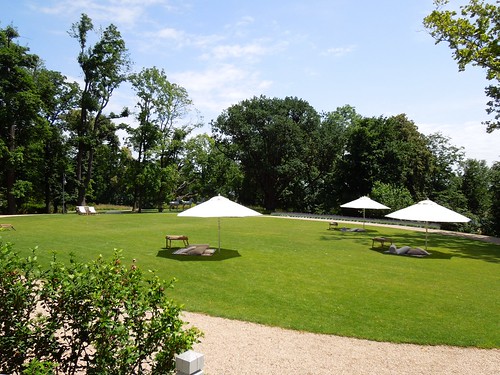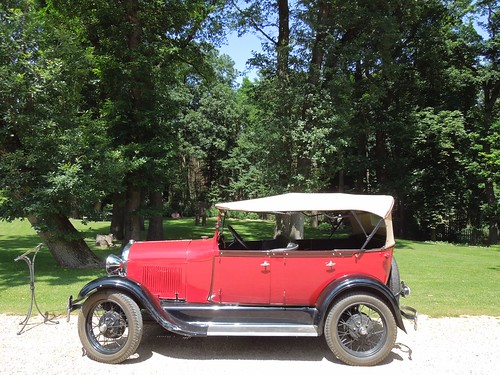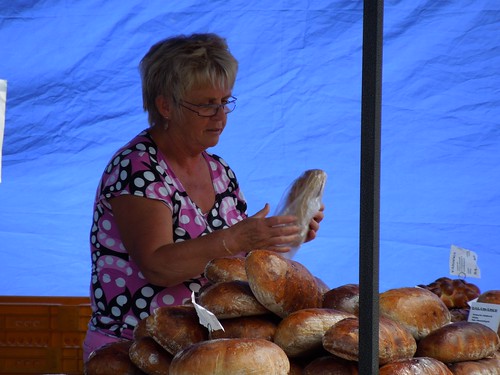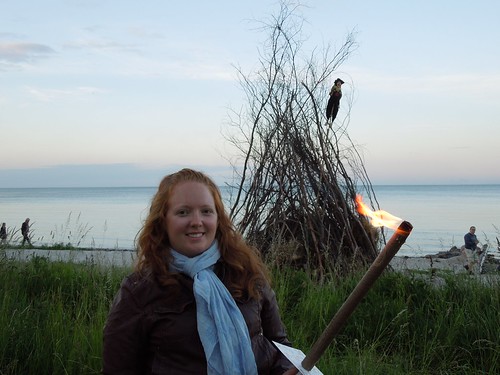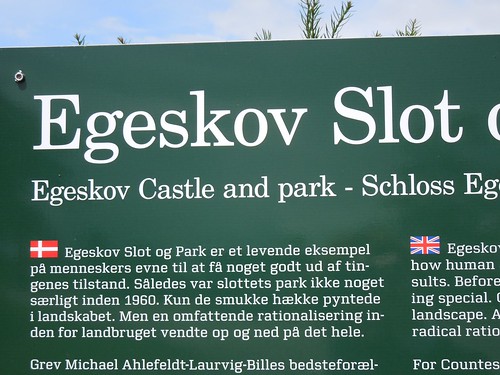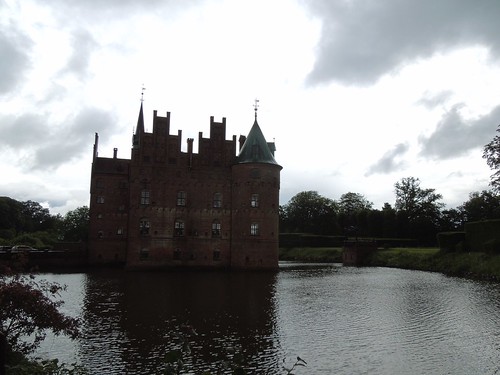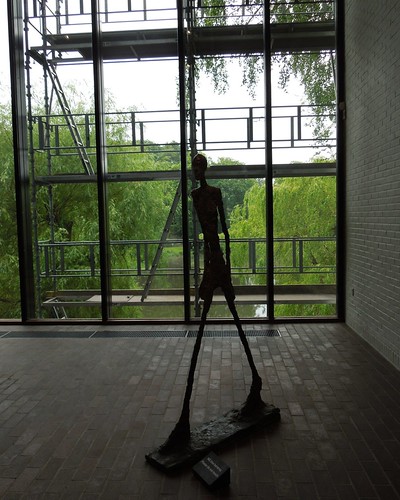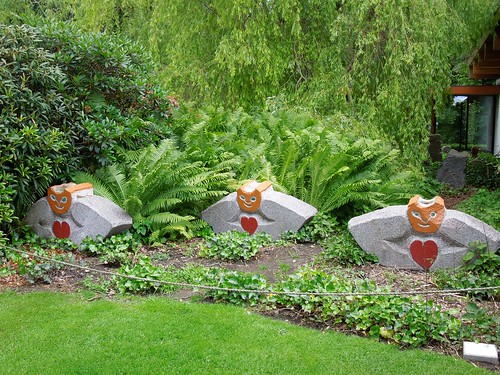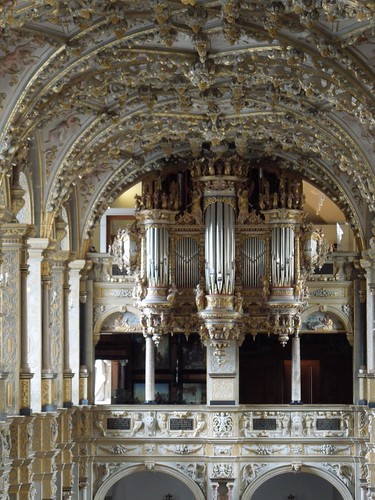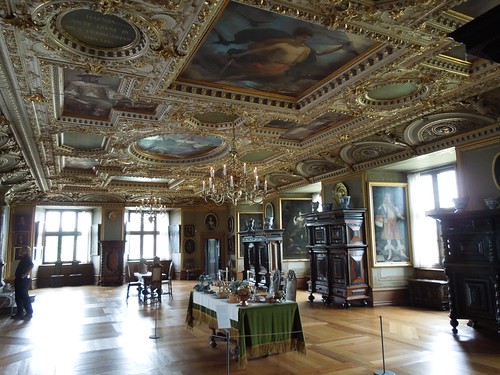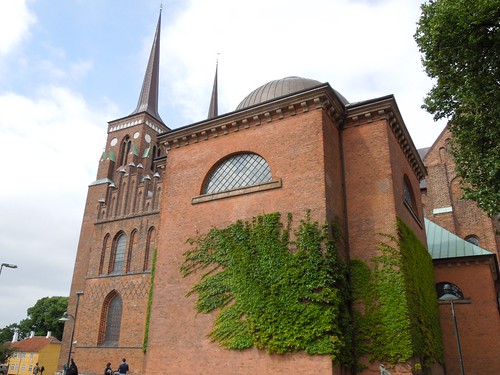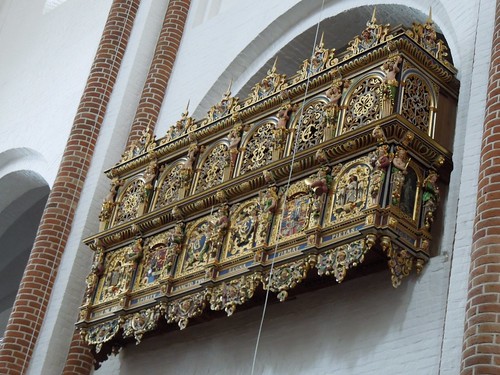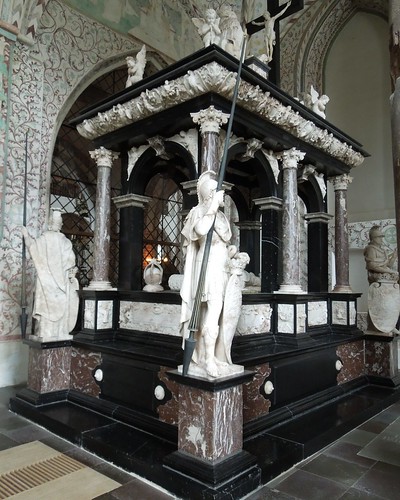NYBORG June 21 - June 26 2012
Nyborg is only 81 miles from Copenhagen. We used it as a base to visit several castles, art museums, and cathedrals in the area. Denmark is such a small country, that it very easy to visit most of the sights based on Funen Island, or on Zealand Island (Copenhagen). In 1998 the Great Belt Bridge linked Zealand Island to Funen Island. This bridge project was a staggering scale and on par the the "Chunnel" in terms of difficulty. The construction took 10 years, 144 designs by engineers, and now is 12 miles long spanning the Storebaelt (Great Belt) crossing the Baltic. Nyborg is one of the oldest towns in Denmark. Katherine and I stayed at the Hotel Hesselet , one of the most stylish hotels in Funen. It is set among beech trees, and there is a magnificent lawn that spans 200 yards to the walking path along the Great Belt (Baltic) with a view of the Storebaeltsbro suspension bridge, and 7 large windmills majestically turning next to the bridge. The area was stunning. We had sun filled days with highs in the 60's. We were so happy to base from there.


The first night that we arrived, we were able to participate in the summer soltise celebration. The Danish people, and all of Scandanvia celebrate this time of year, as they have since the Vikings with large bonfires on the beach. The evil witch is in the bonfire. Everyone gathers from land and sea to light the bonfire, burning the evil spirits away, and making way for new good spirits. The bishop said a few words of inspirition (we think, it was in Danish!). Then everyone sang a song written in 1885 by Holgar Drachmann, Midsummer's Hymn - "We Love Our Country". It was such a special evening. This celebration is as revered as Christmas. We were the only "foreigners" in attendance.
Here are a few views from our room - Now do you see why we loved this place!!
Relaxing and Blogging
ODENSE: Birthplace of Hans Christian Andersen.
Many people make their living off Hans Christian Andersen and all the visitors his memory brings to Odense. But the town never seemed to appreciate the boy until the world discovered his writing. He was very unhappy in Odense and left as soon as he was old enough to go to Copenhagen. His father was a cobbler, and was forced to marry is ill tempered peasant mother when she was 7 months pregnant. One grandmother was "insane", and the other was a "pathological liar". Small wonder that this creative soul turned to children's stories and wonderful fairy tales.
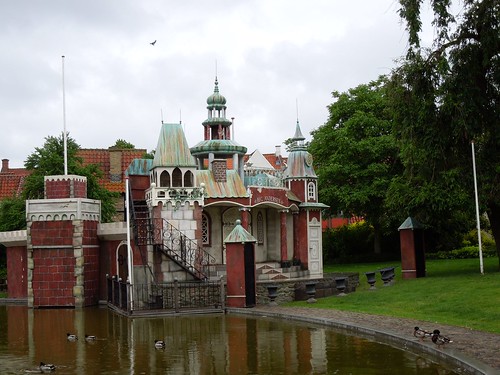

Odense is in the heart of Funen and home to 185,000. It's one of the oldest in the country - history back 1,000 years. Today it is an industrial might in Denmark its harbor linked by a canal to the Odense Fjord and thus the Great Belt. It is the center of eletro-tecnical, textile, steel, iron and timber production. I was surprised to see such a large population of Vietnamese in this area. There are several Vietnamese Catholic Churches, many restaurants, and schools. Of course, it is a harbor, which is where the Vietnamese generally settle.
EGESKOV CASTLE
This moated Renaissance castle is the best preserved of its type in Europe. Constructed in 1554, it is still privately owned and inhabited by the descendants of Henrik Bille, who purchased the castle in 1784. The castle was built on oak pillars in the middle of a moat for which thousands of oak trees were cut down.
Of course every castle has its drama. An unfortunate maiden, Rigborg, who was seduced by a young nobleman and bore him a child out of wedlock. Banished to the castle, she was imprisoned by her father in a tower from 1599 to 1604. Nothing has changed right? It's always the woman's fault!!
The inhabitants of the castle were great hunters - elephant tusks and the heads of tigers hang in the hall.
The gardens are exquisite. 1730, and the most dramatic in Denmark. The Fushsia Garden contains the largest collection of fushsias in Europe with 75 different species. The English gargen with its tree-studded green lawns sweeps down to the streams and the casle lake.
There was a special exhibit while we were there.
"Titania's Palace", which the LEGO Fund has loaned to the palace. This fantastic doll's house was built in 1907 by a father for his daughter who wanted a proper house for the small elves she'd seen at the bottom of the garden. It took the father and some skilled craftsmen 15 years to complete the job. The palace houses about 3,000 unique objects collected from around the world.
LOUISIANA MUSEUM
In a spacious old park with a panaromic view across Oresund to Sweden, this is one of the greatest museums of modern art in the Nordic world. The museum opened in 1954 has grown and grown with bequests and donations, and many more galleries have been added to the existing 19th century villa. Some of the finests paintings and sculptures by international artists such as Calder, Dubuffet, Max Ernst, Giacometti, Picasso and Warhol. All of my favorites. The grounds were exquisite, and the view to the Baltic was incredible.
Why was it named Louisiana in the middle of Denmark? The orginal owner of the property Alexander Brun who donated it to the foundation, was a very wealthy landowner. All Three of his wives were named Louise, hence - Louisiana.
Arp
Calder
Henry Moore
Giacometti
Picasso
FREDERIKSBORG CASTLE.
This is the most beautiful royal residence in Denmark. Surrounded by a moat the slot (castle) was constructed on three islands and in a lake. It was built
in the Dutch Renaissance style (red brick,copper roof, sandstone facade). The oldest parts date from 1560 and the reign of Frederik II. His more extravagant son, Christian IV, erected the main part of the castle from 1600 - 1620. From 1671 - 1840 the Danish kings were crowned in Christian IV's chapel, which is still used. It is an exquisite chapel, and has on old organ build by Esaias Compenius in 1610 - it is still being used today.
The gardens were used by three kings of Denmark. Their design was by Johan Cornelius Krieger in just five years. He got carried away and created a cascade with wather canals and fourtains, and even a parterre sporting royal monograms to flatter the egos of the royals.
ROSKILDE DOMKIRKE
There is no church in Copenhagen or anywhere else in Denmark to rival this towering ediface. The cathedral made Roskilde the spiritual capital of Denmark and northern Europe. The cathedral looks as if it is too big for the town surrounding it. The construction started in 1170 when Absalon was bishop of Roskilde, and it continued into the 13th century.
The Domkirke is the final abode of 38 Danish monarchs whose tombs are here. These tombs are the most elaborate I have ever seen - even the Pope's tombs in Italy can't match these elaborate resting places.
Christian IV who built all of Copenhagen , is interred in a grandios chapel with a massive sculpture of himself in combat, a bronze likeness by Bertel Thorvaldsen.
One of the most charming aspects of the cathedral is the 16th century clock. A tiny St George on horseback marks the hour by charging a dragon. The dragon howls, causing Peter Doever, "the Deafener" to sound the hour. A terrified "Chimer" shakes in fright but pulls herself together to strike the quarters.


